
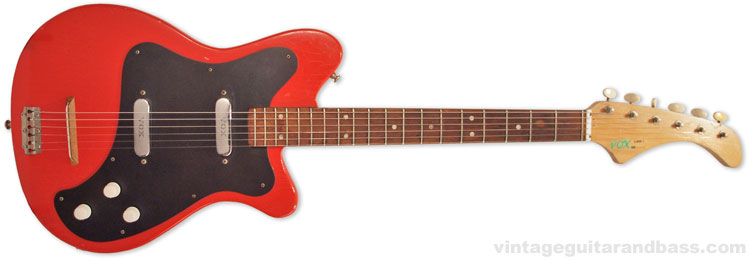
The Vox Clubman, or V203, was one of the brand's earliest UK-built solid body models, though appearing after the Ace, Escort, Duotone, Consort and Soloist models, probably debuting in 1962. They were assembled in Vox's Dartford plant, using parts produced by Vox and other British manufacturers. There were actually two models initially, the Clubman II as shown here and the Clubman I with only a single pickup in the bridge position.
It went through a lot of changes early on, including a complete body/neck redesign in the first half of 1963. Despite this, some early 'old-design' examples were still shipping throughout 1963, and possibly into 1964 alongside the new design, using up old stock. This instrument, judging by the serial number, would have been one of the very last old-style Clubman guitars that shipped, most likely late 1963; some time after it was manufactured. It has a number of features by then largely phased out of Vox guitars in general: black bakelite scratchplate, L-shaped nut and combined Vox/model designation decal. Find out about other variations of the Clubman here.
 Clubman I A fine quality single pickup solid electric guitar, distinctive styling in red or white cellulose finish. Polished neck with shaped head. Vox strings and pickup
Clubman I A fine quality single pickup solid electric guitar, distinctive styling in red or white cellulose finish. Polished neck with shaped head. Vox strings and pickupThe Clubman was certainly an entry level instrument: lightweight and stripped of all but the most basic features, but perfectly acceptable for beginning guitarists. Over the few years of its production it improved markedly, gaining superior woods, and hardware, but at this early stage the body was a very thin multi-layered laminate, whilst the un-radiused fretboard was (perhaps?) sycamore - but stained brown to resemble rosewood. It was fitted with a very simple tailpiece and floating bridge, but at least had two pickups.

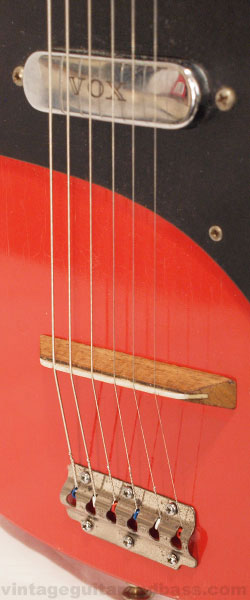
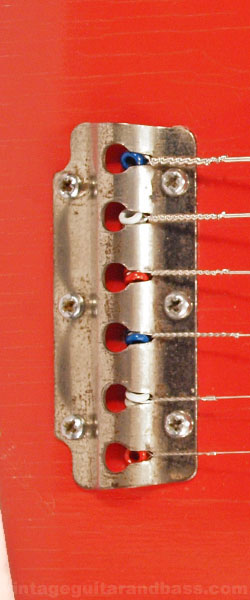
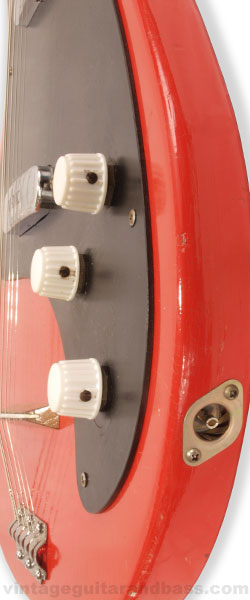


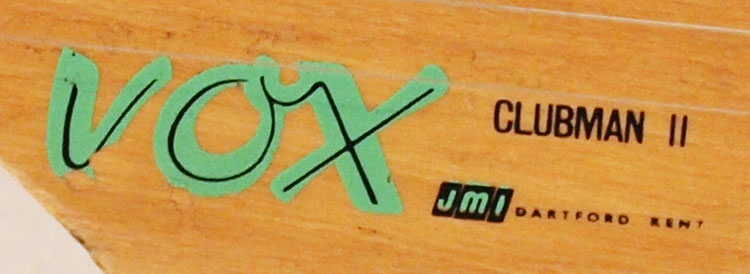

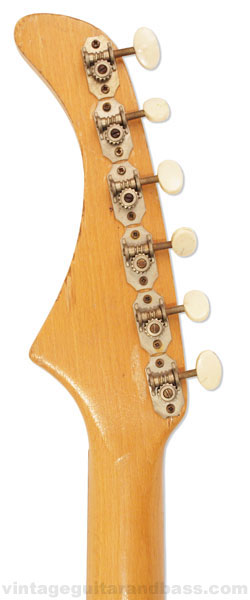

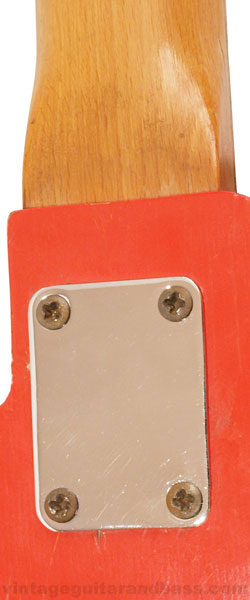


The Clubman circuitry was really very simple: just two volume controls and one master tone. Volume potentiometers are unbranded with no date codes, but values 1 MΩ logarithmic taper. The tone pot is 250KΩ linear taper. The capacitor is rated at .05 µF, and, as is common in UK Vox guitars, manufactured by Hunts.
The Clubman, and Clubman bass not only had the same body shape, they actually used the same bodies, scratchplates, pickups and wiring. A guitar could become a bass, and vice versa by exchanging the bridge and neck. When the Clubman guitar was assigned a new body style, the bass remained unchanged, preventing potential wastage of surplus bodies - although most later Clubman bass guitars were actually given a thicker solid wood (typically mahogany) body fairly soon after this point.
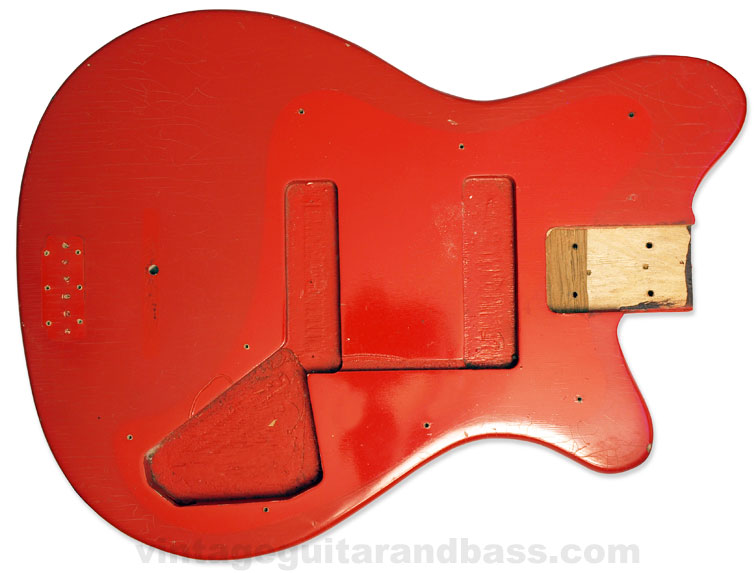
Note the mahogany shim in the neck pocket of this guitar. This were routinely added to Vox guitars when setting up before leaving the Vox factory.
Although an entry level instrument, the Vox Clubman, with it's single coil V1 pickups is a really easy playing, and sweet sounding guitar. Very playable! Demonstrated here through an (also 1963) British WEM ER-15 head with Pick-A-Bass cab. Recorded with an Electrovoice RE-20 (left channel) and Shure SM57 (right), through a Focusrite Scarlett 2i2 interface - all highly recommended gear!
Subscribe to our youtube channel for more vintage guitar and bass demos. Also, check out the longer, high definition demo of this guitar/amp here
£146